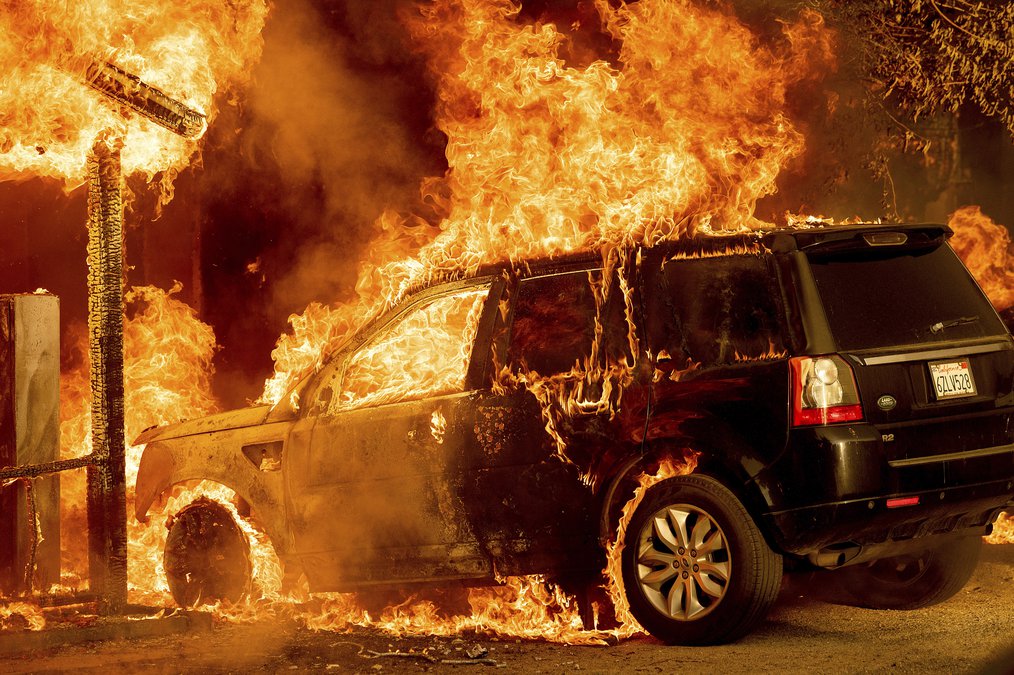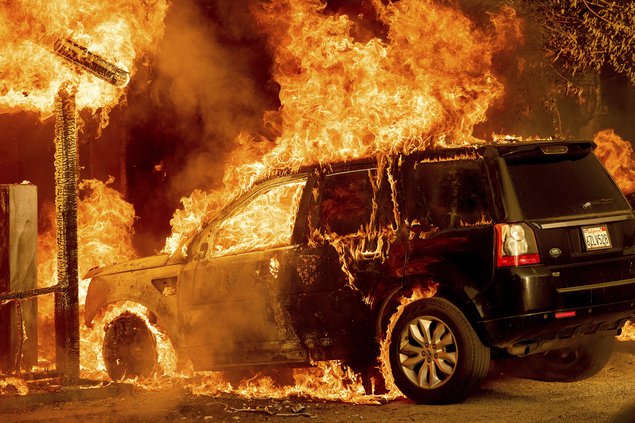It was an eerie death pall of sorts that settled over the Northern San Joaquin Valley Wednesday afternoon.
As smoke blocked out the direct rays of the sun westerly breezes swept across the valley from charred Sierra forests hundreds of miles away. You could smell — and actually taste — the smoky remnants of more than 200,000 acres of wild lands burning throughout Northern California.
It was just as nature intended.
Not to dismiss climate change which is real and has been around ever since the earth was formed 4.54 billion years ago — roughly the same time Mick Jagger launched his rock and roll career — but this is not the end of world.
Internet “news” sites that have run out of ways to use the pandemic, wildfires, political discontent, and rise in violent crime to rack up more click counts to monetize via ads for everything from adult diapers to bug zappers, have now upped their game.
Commentaries shallower than Furnace Creek meandering on the floor of Death Valley in mid-July are now playing the “end times” card.
Of course they don’t say that exactly as it would be politically incorrect to give credence to anything remotely connected with a religious theme. Instead they compare today to the start of the Paleogene Period. And, no, that is not a reference to the trendy diet du jour. It is the scientific name given the era that followed the end of the dinosaurs.
No matter how self-aborsbed we are with our woes, the current pandemic by historic standards is almost a walk in the proverbial park. The Black Plague in the 14th century made every pandemic popping up every hundred years or so since — including COVID-19 — pale in comparison. Somewhere between 75 million and 200 million people died over seven years.
And let’s not forget plain old epidemics on a more frequent basis jack up the body count.
When it comes to gun violence we have a long ways to go to top the slaughter of World War II pegged at between 50 million and 55 million when military deaths and civilian deaths caused by military action are bundled. You can add another 20 million or so for civilian deaths from famine and disease that were set in motion by World War II.
As for political discontent, we live in an echo chamber that only compounds our sense of self-importance in the here and now. Taken simply from the prism of civil rights in the United States and abroad we are nowhere near the poisonous place we were at 60 years ago.
And when it does to massive wildfires in California, they are not a modern-era phenomenon.
The Yokuts — among the first to inhabit the geographic carve out we call California — experienced wildfires sweeping through the Great Central Valley. Some would start in the late spring and burn until the first rains signaled the approach of winter.
On the flip side much of the Great Central Valley would be submerged under floodwaters for weeks on end whenever a heavy Sierra snowpack was pelted with periods of extensive warm rain. That was witnessed by those busy building the State of California back in 1862. It’s when there were 400,000 residents in all of California or the combined population today of Stockton and Manteca.
Just like beavers, we were empowered by nature with skills and mental processes that allowed us to build dams to survive. We also have the ability to build shelter against the elements although clearly on a nesting level way beyond the birds and the burrows created by ants and gophers.
And just like with every other living thing, man is subject to the forces of nature. We might be able to harness them but we never really control them. And if science is correct, as a species we will ultimately lose to nature.
So how far how far off are the Chicken Littles driven by the need to feed into people’s fears and anxieties so they can generate clicks allowing them to be virtual world celebrities or to enjoy a jet setter lifestyle with a huge carbon footprint accelerating the very demise they smugly warn about?
It is clear there is climate change. But what is more pressing when it comes to droughts and how damaging wildfires are in the western United States, is how mankind interfaces with what nature has given us more so than what we are doing that nudges the climate change dial.
California, for the most part, has a Mediterranean climate. As such it is an entirely different ball game supporting 400,000 residents in 1862 as opposed to 39.3 million today.
We do not have rain year round. Nor does nature place the water and snow in the basins where everyone wants to live.
Worse yet we do foolish things. We try to make lush grass the norm even though it is not only non-native but it is literally sucking up water that may be critical for our own lives in a year or two.
We still flood irrigate, drain aquifers that have taken centuries to fill, play on lush golf courses in deserts that get 2 inches of rain a year, and ignore endless measures to conserve water that many people in the world would jump for joy to have flowing out of a faucet where they live.
As for wildfires, it is how nature regenerates.
Droughts in the past have triggered tree die offs and laid the ground work for bug infestations that make things worse.
The big difference in the past 70 years is that areas that were once sparsely populated now host cities and rural subdivisions as the cost of housing keeps driving people farther from urban centers.
There was a time when small fires were allowed to burn out. In most cases, they did just that to effectively reduce brush and debris. Modern-day wildfire strategies have been forced to change to place a higher priority on saving lives and structures.
As a result wild-lands have developed heavier fuel loads for wildfires than if nature had just been left to its own devices.
None of this is to diminish the seriousness of what we are dealing with.
And it isn’t just an attempt to put it in perspective.
It is to underscore that we can come back from the abyss by starting to alter how we interface with nature and how we value and use water.
Of course we will waste it when it is cheap and plentiful. That has become the “natural thing” to do over the past 100 years thanks to the amazing system of storage and conveyance we have built in California that literally moves water across four water basins and 600 miles.
We have serious problems. No doubt about it. But we do have the ability to change the course when it comes to water and fire in California. That’s because the biggest issue is not climate change as how much as how we interface with nature and deploy and use the precious life giving resource that we nonchalantly hose down sidewalks before we send it down storm drains.
This column is the opinion of editor, Dennis Wyatt, and does not necessarily represent the opinions of The Bulletin or 209 Multimedia. He can be reached at dwyatt@mantecabulletin.com





